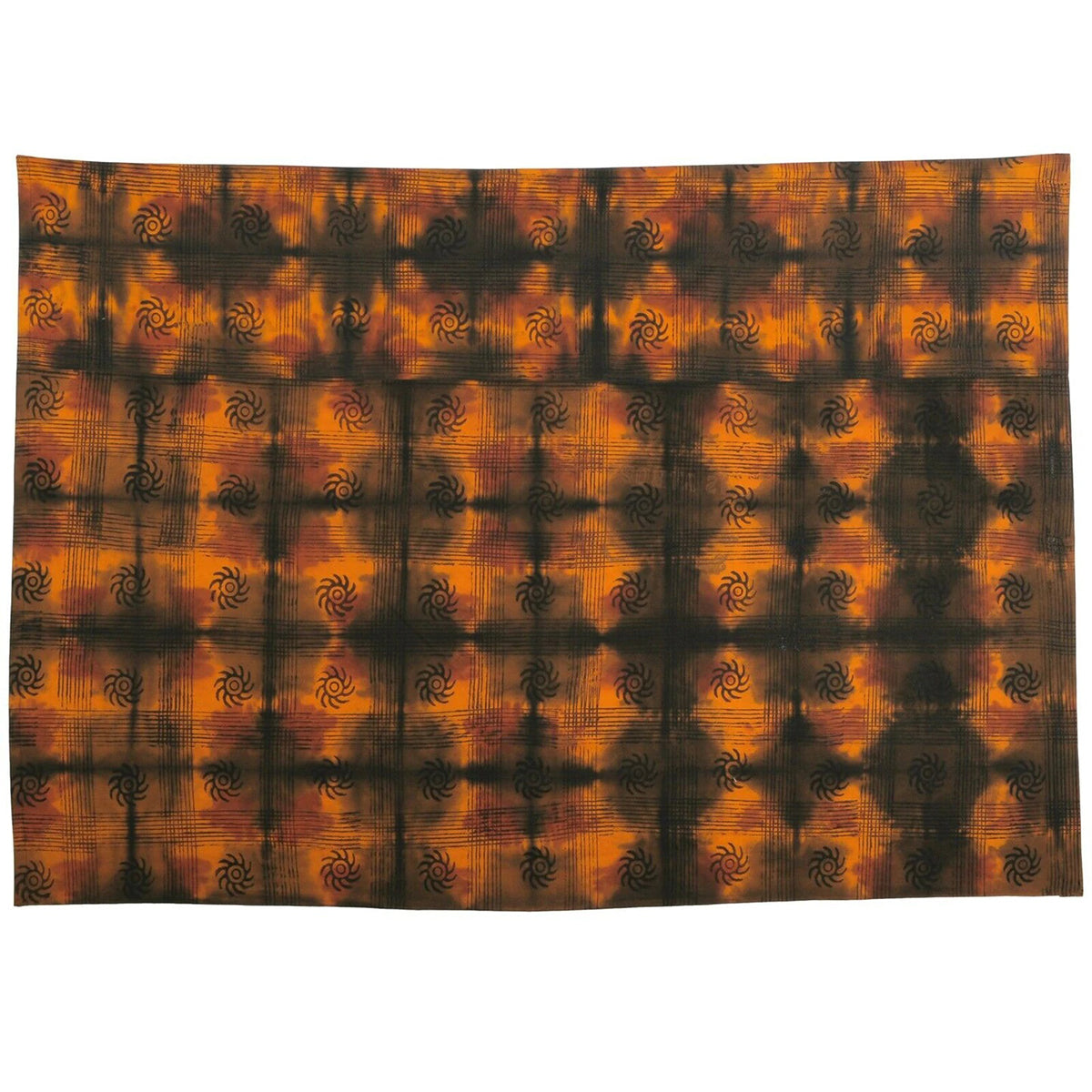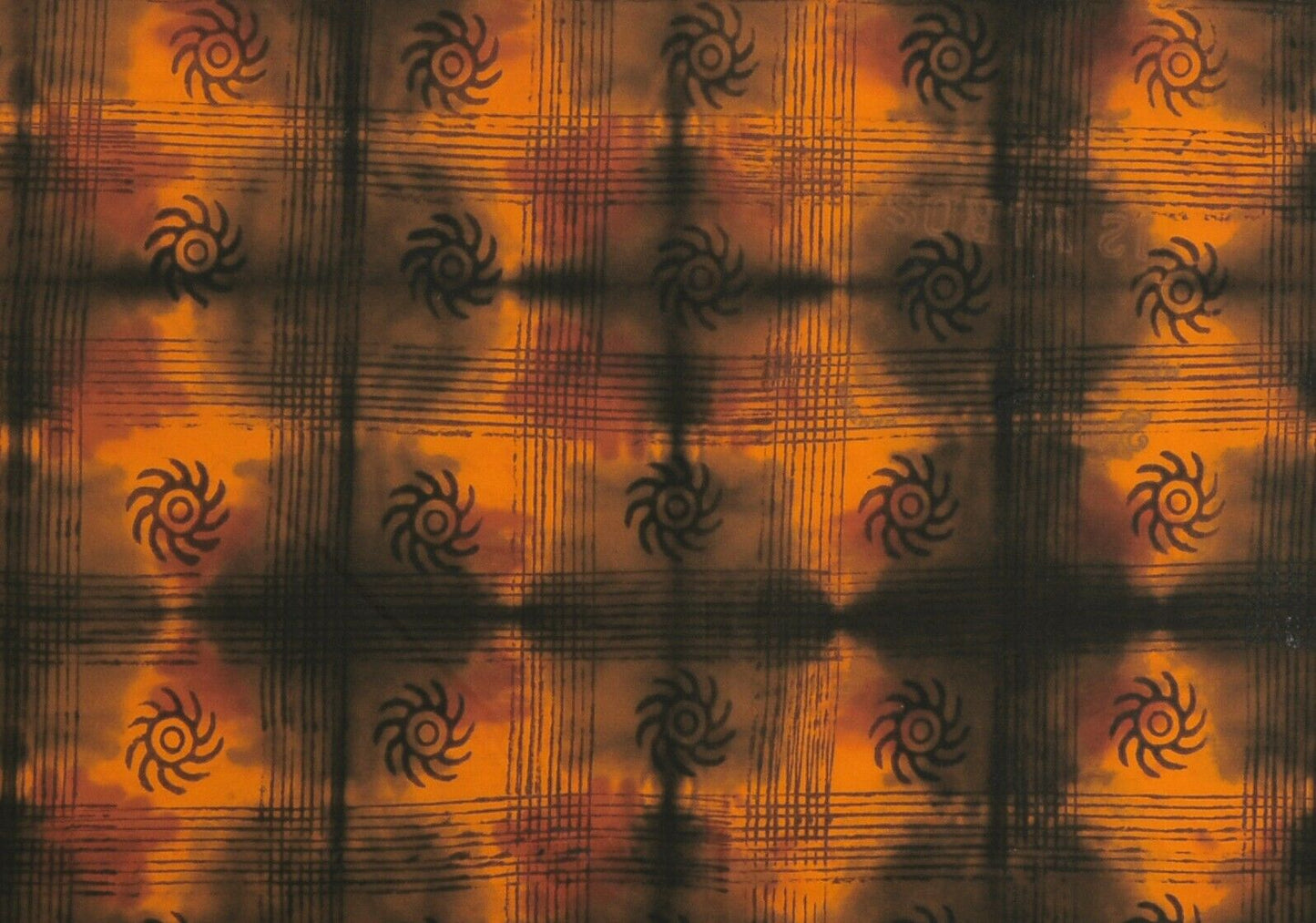Tribalgh
Hand stamped Adinkra Batik Tie‑Dye Cloth – Vintage 1990s Woman Size
Hand stamped Adinkra Batik Tie‑Dye Cloth – Vintage 1990s Woman Size
Item number:
SKU:SD-31299
Check shipping cost
Check shipping cost
Standard shipping cost for this item is $ 9.95
Insured "AIR MAIL" anywhere in the world.
Delivery time for Europe is 7-14 working days.
Delivery time for USA and the rest of the World is 14-21 working days.
We combine shipping on multiple purchases!
DHL option available for faster delivery ( 2 - 4 working days ) to all over the world.
During your checkout you will be able to see cost and select DHL option.
FREE upgrade to DHL for orders over $ 200
Couldn't load pickup availability
Hand stamped Adinkra Batik Tie‑Dye Cloth – Vintage 1990s “Woman” Size, Ashanti Akan
This authentic Hand stamped Adinkra cloth from the late 1980s–1990s combines traditional Batik Tie‑Dye with stamped Adinkra symbolism, hand‑painted, hand‑embossed and expertly embroidered. Crafted using natural dye from the bark of the badie tree and iron slag, stamped with calabash‑carved blocks. A rare, wearable piece showcasing Ghanaian artistry and Ashanti Akan heritage.
- Size: 65″ × 46″ (165 cm × 116 cm)
- Condition: Very good vintage condition, minor stains and light wear consistent with age and use
- Technique: Natural bark‑based dye, calabash blocks, Batik Tie‑Dye, hand‑stamping, hand‑painting, embroidery
This unique cloth is a tribute to the skilled artisans of Ntonso, Ghana, using artful, time‑honored manual processes:
- Wax melting and motif preparation from foam
- Hand‑printing wax patterns onto fabric
- Cold‑water rinse and dye bath (≈ 30 min), repeated for additional symbols
- Finishing with wax removal, final wash and air‑drying
About Adinkra Cloth
Adinkra cloths are symbolic Ghanaian textiles originating from the Akan and Ashanti cultures. Unlike handwoven fabrics, these are hand stamped using carved calabash blocks and stamped with meaningful symbols. Each Adinkra symbol conveys a proverb, moral lesson or social value. Colors and pattern placement carry additional meanings, often tied to community, life stages and spirituality.
Symbolism, Materials & Cultural Use
Traditional stamps are carved from calabash, and dyes are extracted from the bark of the badie tree, simmered with iron slag to produce deep tones. The Batik Tie‑Dye method ensures rich, layered visuals. Adinkra cloths played a vital role in Ashanti society, worn during funerals to honour the deceased, and at celebrations to signify resilience, unity and cultural pride.
Adinkra Stamping Tradition & History
Stamping cloth with symbols dates back centuries, evolving into a hallmark of Akan identity. The legend of Nana Kofi Adinkra, a Gyaman king captured by Asantahene Bonsu Panyin, inspired the Adinkra name. Post‑battle, patterned mourning cloths became symbolically associated with deep emotion and remembrance. These hand‑stamped, not hand‑woven, textiles remain powerful storytellers of Ghana’s rich history and Ashanti customs.
Celebrate heritage with this rare vintage piece, perfect for cultural décor, ceremonial display, or wearable art.
Explore more:
Share




